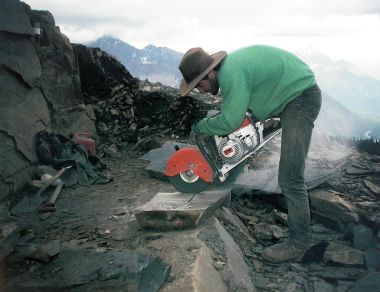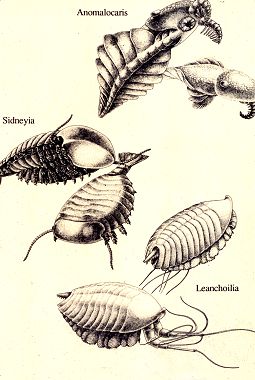
The Burgess Shale. After Norman: De Fantastische wereld van
de prehistorie (1994)

After Gould: Wonderlijk leven (1991)
It appears from the fossils that in the beginning of the Cambrian many life forms were existing which later on have apparently died out. The huge radiation of life forms in this period is often called the Cambrian explosion.
Know more?
The Burgess Shale
Fossils
of Chemgjiang China
The Sidneyia was an arthropodal predator with a length of about 10 cm which could be the ancestor of the spiders, the trilobites and the scorpions.
The Leanchoilia was a blind arthropod with long appendages on the head each ending in three whip-like tentacles.
These are only three of the more than 120 species of animals found in the Burgess Shale.
Know more?
Anomalocaris
Leanchoilia